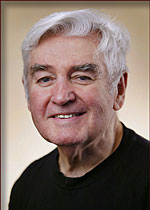 With the exception of an occasional media event, I don’t drink a lot of high-end Italian wines. Can’t say why, for sure, but I probably should.
With the exception of an occasional media event, I don’t drink a lot of high-end Italian wines. Can’t say why, for sure, but I probably should.
So it was serendipitous that during a recent stop at Post Wines in Syosset that I encountered Eric Svirida, a rep for Syosset-based Michael Skurnik Wines, pouring samples of the importer’s wares for a dozen or so customers.
Svirida had uncorked a trio of Brunello di Montalcino bottles, among Tuscany’s top reds, and a trio of Piedmontese reds— a Barbaresco and two Barolos. The wines ranged from $32 to $80. Given the typical premium prices often attached to these wines, I was astonished that so were attractive values.
The tasting started with the Brunellos, all from the 2008 vintage, a difficult, but good one for growers with an August hailstorm that damaged many vines. The Consorzio del Vino Brunello di Montalcino, a trade group, scored the vintage 4/5 stars.
We started with the San Filippo Brunello di Montalcino 2008. San Filippo is an estate of 22 hectares, 11 under vine (5.5ha in Montalcino) east of Montalcino. The wine is ruby red with a powerful nose of deep red fruit, mostly cherry, oak and herbs. The wine is dense, its tannins lush and soft, and there is a hint of heat. The cherry notes continue on the palate and the acidity is bright, suggesting the aging potential of the wine. Post’s price for the event: $36.
Next up was La Colombina Brunello di Montalcino 2008. A relatively new producer with just 3 hectares near Castelnuovo Abbot, it sold its grapes until 1997, when it produced its first vintage. Wood and tart cherries on the nose were followed on the dense palate with notes of cherries and spices and dry tannins. Post sells this for $36.
The third Brunello was the Ciacci Piccolomino Brunello Pianrosso 2008, a single vineyard wine from the southwestern reaches of Montalcino. A large estate with 172 ha (425 acres) that dates to the 17th Century, this wine is produced with grapes from a single vineyard of just 11.69ha. This mouth coating ruby red wine offers up notes of plums, blackberries, minerals, lots of acidity, some heat and a big-dry finish. It sells for $56 at Post.
On to the Barbaresco, in this case a Sottomano Barbaresco Fausoni 2010. The 2010 Barbaresco vintage has been described by producers as spectacular and it was evident in this wine from a tiny — 1.5ha — 35-year-old vineyard in Nieve. This definitely is a food wine, starting with its huge nose of sweet cherries. On the palate there are cherry, earthy and Balsamic notes. And despite monster tannins, the wine proved accessible. Post price: $47.
Azelia Barolo 2008, our first Barolo, was a winner, in part because of its wallet-friendly price, just $32 at Post. A bit closed, the nose suggested the sweet fruits to come on the chewy, full-bodied palate. I picked up notes of prunes, licorice and cocoa with a mouthful of soft tannins. Accessible now, but it certainly will age well.
Our second Barolo and last wine, was the Chiara Boschis Barolo Cannubi 2008 is produced with Nebbiolo grapes grown in the well-known Cannubi vineyard. Chiara Boschis is the only female winemaker in Barolo. The nose is floral and fruity and on the dense, balanced palate there are generous notes of berries and minerals along persistent, albeit soft, tannins. With a 95-point score by the Wine Advocate, the wine was the priciest of the tasting at $80.
Skin flint that I am, I limited myself to buying one bottle: The Azelia Barolo. It’s hard to pass up such good value.











